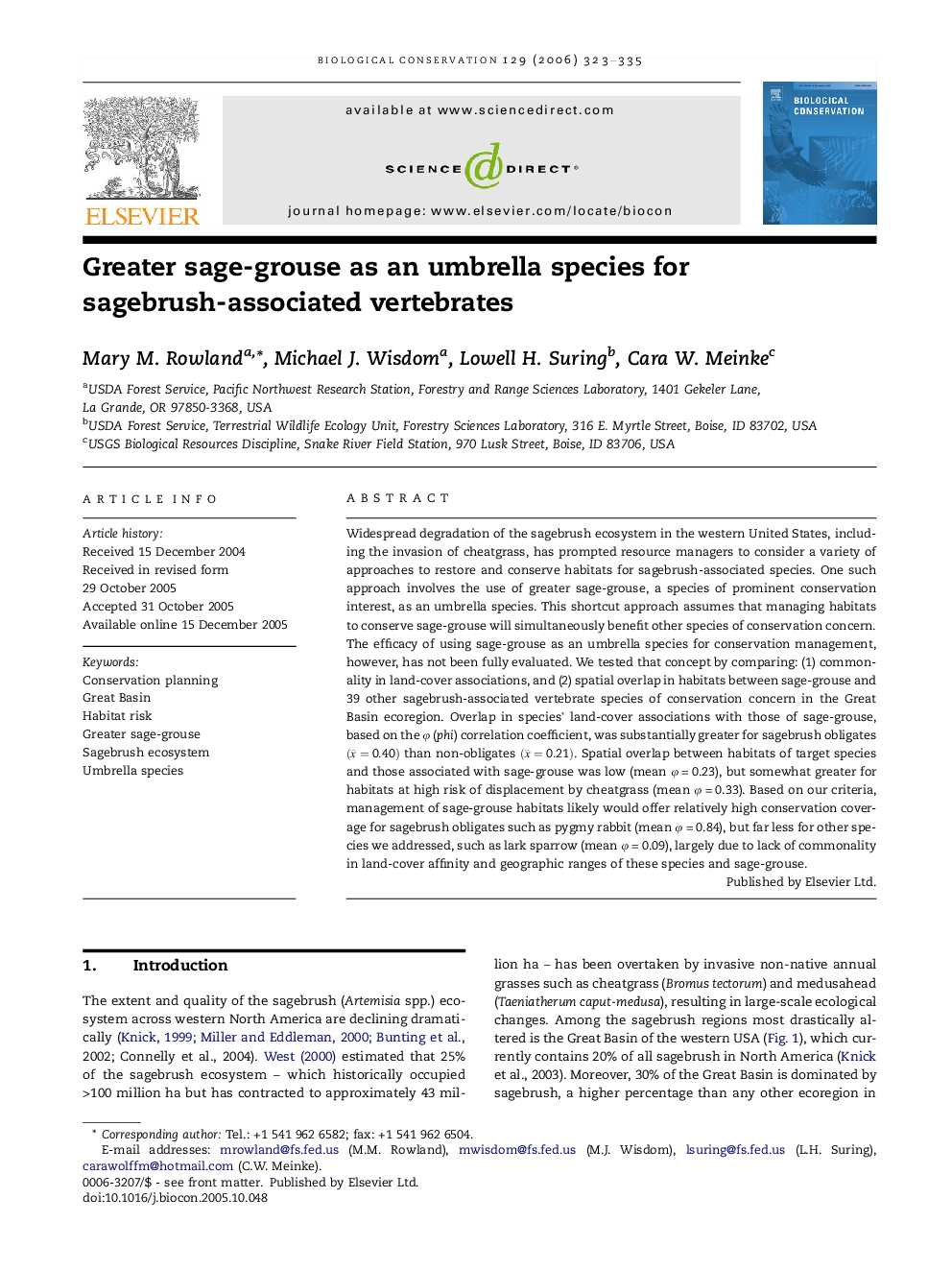| کد مقاله | کد نشریه | سال انتشار | مقاله انگلیسی | نسخه تمام متن |
|---|---|---|---|---|
| 4387720 | 1304622 | 2006 | 13 صفحه PDF | دانلود رایگان |

Widespread degradation of the sagebrush ecosystem in the western United States, including the invasion of cheatgrass, has prompted resource managers to consider a variety of approaches to restore and conserve habitats for sagebrush-associated species. One such approach involves the use of greater sage-grouse, a species of prominent conservation interest, as an umbrella species. This shortcut approach assumes that managing habitats to conserve sage-grouse will simultaneously benefit other species of conservation concern. The efficacy of using sage-grouse as an umbrella species for conservation management, however, has not been fully evaluated. We tested that concept by comparing: (1) commonality in land-cover associations, and (2) spatial overlap in habitats between sage-grouse and 39 other sagebrush-associated vertebrate species of conservation concern in the Great Basin ecoregion. Overlap in species’ land-cover associations with those of sage-grouse, based on the ϕ (phi ) correlation coefficient, was substantially greater for sagebrush obligates (x¯=0.40) than non-obligates (x¯=0.21). Spatial overlap between habitats of target species and those associated with sage-grouse was low (mean ϕ = 0.23), but somewhat greater for habitats at high risk of displacement by cheatgrass (mean ϕ = 0.33). Based on our criteria, management of sage-grouse habitats likely would offer relatively high conservation coverage for sagebrush obligates such as pygmy rabbit (mean ϕ = 0.84), but far less for other species we addressed, such as lark sparrow (mean ϕ = 0.09), largely due to lack of commonality in land-cover affinity and geographic ranges of these species and sage-grouse.
Journal: Biological Conservation - Volume 129, Issue 3, May 2006, Pages 323–335